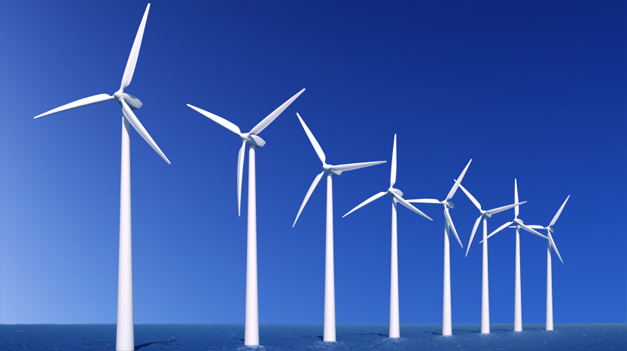
With just over 5000 MW of wind power currently installed (5086 MW), France is the fourth largest market in Europe after Germany, Spain and Italy. Surprisingly, however, none of the installed capacity is yet located offshore.
Until now, France’s cumbersome legal framework governing offshore economic activity has severely hampered offshore wind development. Despite plans for the country’s first offshore wind farm having been on the drawing board since 2005, lengthy authorization procedures delayed construction until the end of 2010.
However, this may all be about to change. In late October 2010, France’s Environment and Energy Minister Jean-Louis Borloo was scheduled to issue a tender for 3,000 MW of offshore wind farms with a contract value of €10 billion, for contracts to build 600 offshore wind turbines around the French coast. France’s objective is to achieve a total offshore wind capacity of 6,000 MW by 2020.
The turbines will be constructed across five to ten designated areas. Although no decision has yet been made, it is likely that these will be located at various sites in Brittany, Haute-Normandie, Pays de la Loire, Languedoc, Aquitaine and Provence-Alpes-Cote d’Azur.
Following the first call, a further two are planned in 2012 and 2014. Reports indicate that wind turbines resulting from the first tender are due to be up and running around 2015.
Location issues
At this stage, issues affecting the location, type and scale of the planned projects are as yet unclear. However, according to Marion Lettry, Deputy Head of French Renewable Energy Association Syndicat Des Energies Renouvelables, it is likely that location will be influenced by geographical factors.
“The north coast of France is the most appropriate for the [location] of offshore turbines because of the [more shallow] depth at the coast,” she says.
The Deux-Côtes project, which is scheduled for completion in 2014, is currently undergoing environmental impact assessment. However, the project has been criticised by local homeowners, fisheries and environmental groups – opposition that may also emerge against any future developments.
Although France’s ambitious plans are likely to proceed as expected, concerns remain over how effective tender schemes are at delivering offshore wind. This is partly because tenders employ ‘price discovery’ to distinguish between bids, creating a highly competitive construction environment.
“Offshore wind investors are exposed to substantial construction risks which can ultimately end up inflating project energy costs and render it unprofitable,” says Charles Hodges, Senior Analyst at Bloomberg New Energy Finance.
“Offshore development involves risk-taking and tenderers risk not delivering in an era where construction and installation processes remain non-standardised and highly sensitive to weather. There are also issues around how developers are expected to make informed bids when the French offshore wind supply-chain capacity and competence is unknown,” he adds.
In terms of project development, the leading outfits are EDF Energies Nouvelles, GDF-Suez, Eole-RES, Valorem and Enertrag. GDF Suez SA, through subsidiary La Compagnie du Vent, is currently seeking to complete the 705-MW Deux-Côtes windfarm offshore from Le Treport which, when completed, will become France’s first windfarm.
The leading wind turbine manufacturers include Repower, Enercon and Vestas, with Nordex, Siemens, Areva Wind and Alstom also enjoying significant market shares.
Looking ahead
So, how much of France’s overall energy demand will be served by wind energy in the future? The market grew by 1,088 MW in 2009, representing 41% of all new generation capacity installed in France. In the same year, wind turbines generated 7.8 TWh of electricity, a 40% increase on 2008, but still only 1.6% of total power consumption.
Although the overall figures are still relatively low, wind electricity production has multiplied twenty times over the last six years. This upward trend looks set to continue, with Lettry predicting annual generation of 50 TWh/25,000 MW by 2020 (19,000 onshore and 6,000 offshore).
“This will represent 10% of the national electricity demand,” she says.
However, the current pace of annual installations might still not be sufficient for the country to meet its renewable energy objectives. According to EU Directives, France must increase its share of renewable energy in final energy demand from 10.3% in 2005 to 23% by 2020.
After a long period in the doldrums, France looks set to substantially increase its offshore wind capacity over the next decade or so. However, if past evidence is anything to go by, the slow pace of development could mean that it may be some time yet before the country emulates the relative success of neighbours like the UK.







